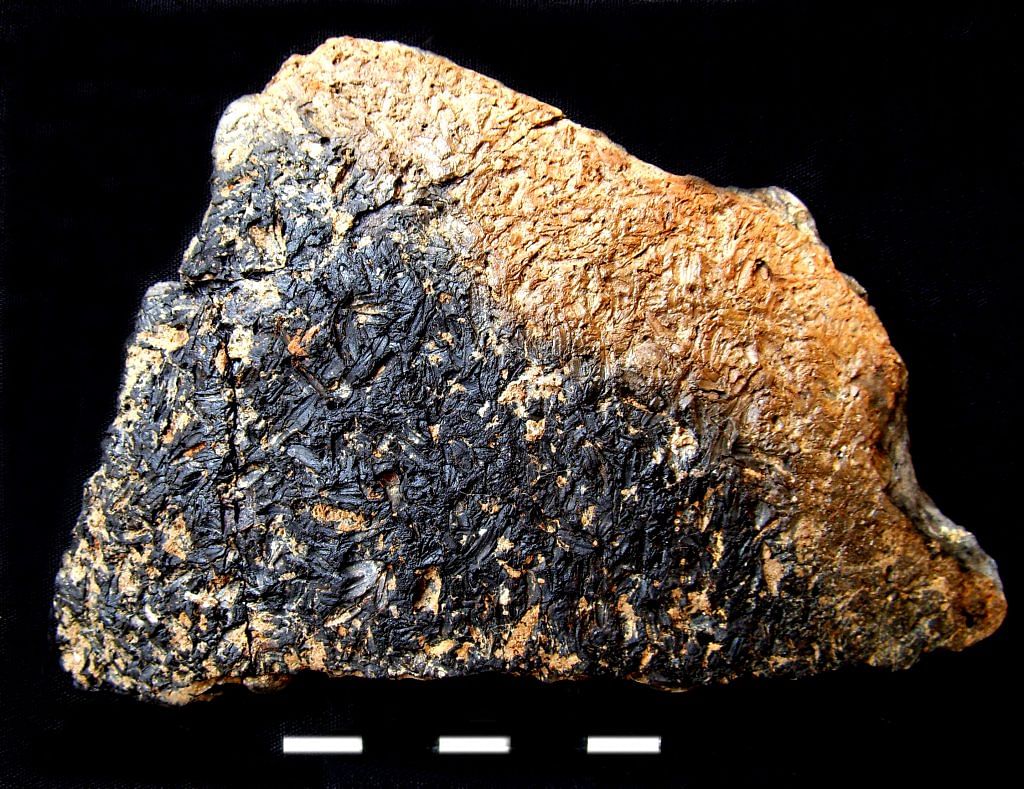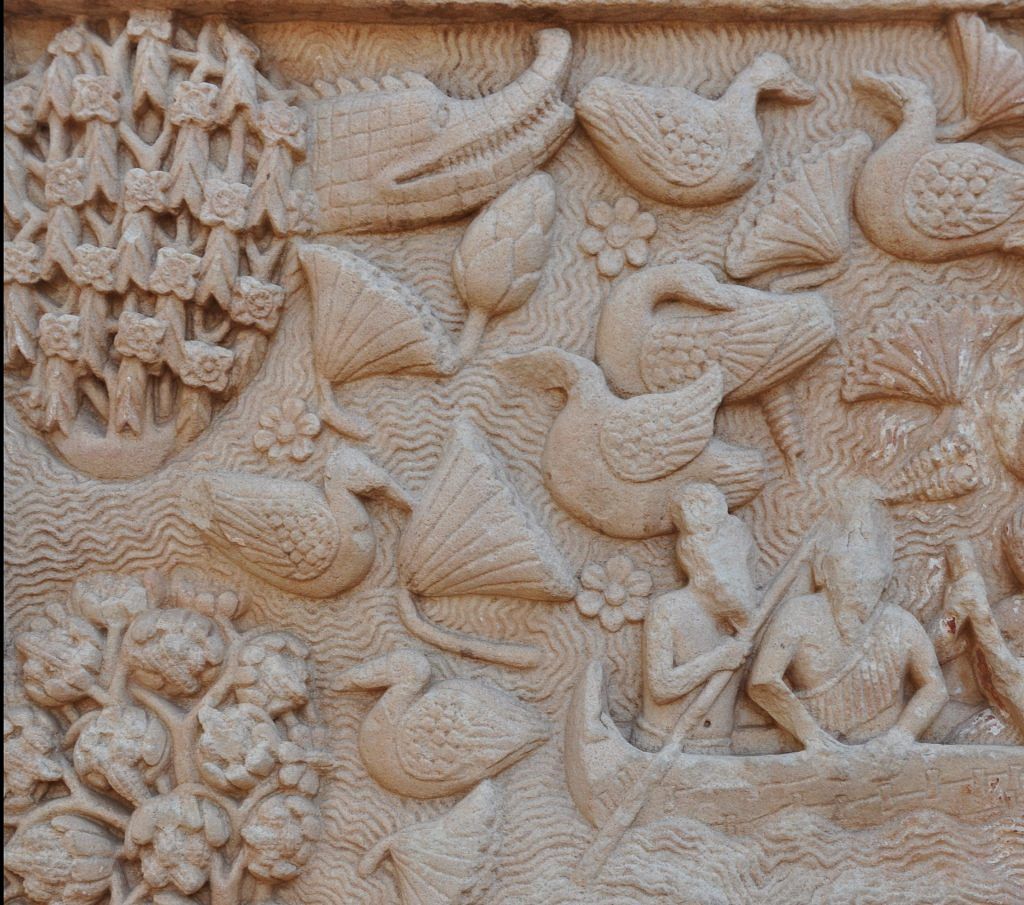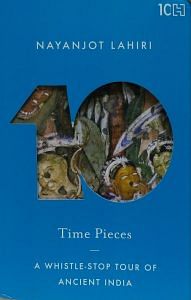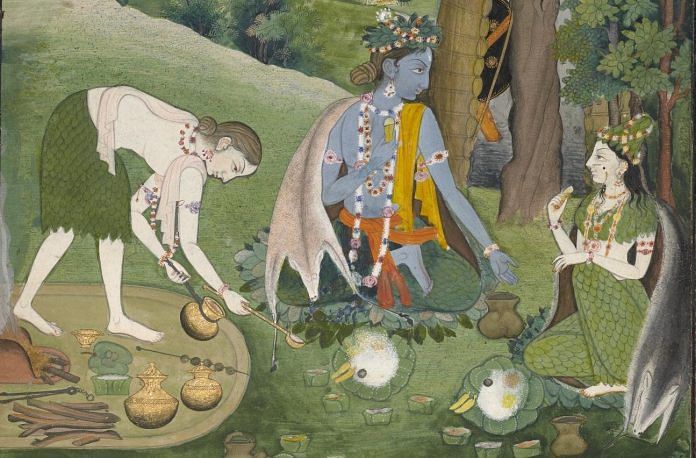Meat eating was the norm right through ancient India, which is why even Emperor Ashoka couldn’t get his family and subjects to give it up.
What did people eat in ancient India? How are menus reconstructed from archaeological remains? What do texts tell us about the culture of food and what are the takeaways from ancient food practices for all of us in contemporary India?
Much of what we know about food consumption comes from the remains of animals and plant species found in places where people lived. At Mohenjodaro, when the first investigations were carried out, the remains of as many as 37 species of animals were recovered. These revealed that the first city-dwellers enjoyed consuming turtles, and relished cattle even more. At any site of the Harappan civilization that has yielded bones, cattle bones have always been found in impressive quantities. Specifically, the teeth of cattle unearthed at these locations provide evidence that the inhabitants slaughtered young animals for food. In much the same way, plant remains range from cereals and lentils to fruits and vegetables, and occasionally even spices used for seasoning. At Harappan Firmana in Haryana, not far from Ashoka University, where I teach, a researcher – Arunima Kashyap – has identified the consumption of brinjals eaten with turmeric and ginger. Her research also shows that leftover food was fed to the household animal, just as it is today. The starch granules scraped from animal teeth here testify to this practice.

Once there is a flowering of various kinds of literature, we are treated to a feast of descriptions around ancient ways of thinking about food. Food theories abound even in texts about subjects like war. The Bhagavad Gita (dated to between 200 BCE and 200 CE), even as it presents the battlefield of Kurukshetra with Krishna and Arjuna, holds forth, without any sense of irony, on different types of food that have the ability to engender particular qualities in those who eat them. So, foods that are cold, stale and highly spiced (“tamasic”) render the eater slothful and dull. Conducive to serenity and spirituality are savoury, nutritive and agreeable foods (“sattvika”). Bitter, sour, salty, pungent and dry foods (“rajasic”) stimulate a person and make him restless. It would, therefore, seem legitimate to ask if Arjuna’s reluctance to fight was because he had been eating the sort of food unsuited to a warrior entering a battlefield.
In the Vedas, some fifty animals were considered to be worthy of sacrifice and, thus, presumably, for eating. As for the Mahabharata, the feastly tales there are better described as beastly ones. Buffalo calves roasted on spits with ghee, large haunches of venison boiled in various ways, meat curries, and dishes of pork and venison, sound far more mouth-watering than the milk and rice, honey and fruit that figure alongside them. Rama and Laxman who, like the Pandavas, hunted animals in the forest during their exile, enjoyed wild meat cooked by Sita.

Meat eating was the norm right through ancient India, which is why Emperor Ashoka’s obsession in getting his family and his subjects to give up its consumption came to nought. After moving to Buddhism, a faith associated with compassion for all life, Ashoka set in motion an administrative process and propaganda to reduce the consumption of meat. There were measures put in place even for the protection of the habitat of living creatures, such as the injunction that husk sheaves in which all kinds of creatures lived must not be burnt or that forests must not be burnt to destroy living beings. On the ground, though, consumption of meat did not reduce, with an overwhelming preference for cattle meat, followed by that of sheep and goat, and many wild animals too, ranging from deer and pigs to cranes and peafowl.
The lesson to be learnt from this is that meat eating then, like meat eating now, could not be stopped by diktat.
 Nayanjot Lahiri is Professor of History at Ashoka University. Her recently published book ‘Time Pieces: A Whistle-Stop Tour of Ancient India’ (Hachette India) provides new dimensions to the study of ancient India by focusing on the particulars – like food habits – so often forgotten.
Nayanjot Lahiri is Professor of History at Ashoka University. Her recently published book ‘Time Pieces: A Whistle-Stop Tour of Ancient India’ (Hachette India) provides new dimensions to the study of ancient India by focusing on the particulars – like food habits – so often forgotten.





“….On the ground, though, consumption of meat did not reduce, with an overwhelming preference for cattle meat, followed by that of sheep and goat, and many wild animals too,….” – inspite of measures being implemented by the rulers, the author claimed, that meat’s consumption did not reduce, without giving any evidence for it or explanation of how!
Meat eating was ‘a norm’ and not ‘the norm’. The archaeological and textual evidence of meat consumption shows that it was eaten, but this does not mean that all ate it. There were vegetarians as well as non-vegetarians then as there are now.
Then Yogi should also eat spit-roasted buffalo calves, if he is a true hindu
Nonsense article. Author don’t have the proper knowledge. Better to learn sanskrit properly then write article.
Dont follow the print n the wire like portals.
Guys dont listen to these utter nonsence of these news portals like the print n the wire.
Blame the authors of the articles, not the website companies.
Utter nonsense article
Very correct. But Great Sentiments of the poor RSS brand Super HindutvaVaadi SuperPatriots are hurt 😛 😛 😀 😀
Misleading article and then they raise the issue of intolrence…….
try it with believes of some other religion and you will get a nice thrashing….
Yesterday or even today, people eat the excreta contained in an animal killed for eating or drinking excreta mixed blood. How do these these justify killing and eating ? Killing animals were always prohibited as per sanathan dharma. Please research properly before writing trash. A professor with such a poor fund of knowledge is very dangerous for the student community.
you and your ……..?????
Low lives were slaughtered in ancient times and we have living commies around us rn. Be patient, we will take inspiration from history, no need to publish bs articles for that.
Another potty of communist stomach
Idiot article
Rama, Sita & Lakshmana led the life of a sanyasi during the 14 years of exile… Secular teachers should not venture into Religious history… they fail miserably!!
“Secular teachers should not venture into Religious history.” – This does not make sense. In fact secular people can explain religions history better.
But not the author of this article did.
This is the kind of confusion arises when you don’t have knowledge of sanskrit and you go on translating ancient scriptures . That’s why in ancient times it was advised to study scriptures under the guidance of a bonafide spiritual master. The word “mamsa” means in “panchami vibhakti ” of sanskrit means fruit pulp. Meanwhile, when Shree Ram was about to leave Ayodhya for exile, he said that he won’t eat “Rajasi or shahi food items” which also includes meat, so how is it possible that he would have ate meat during his time of exile.
Yes there was meat eating in ancient India but then it was advised that if a person leaves meat eating then he gains a lot of spiritual progress. In the Mahabharat, not only in Gita but at several places Bheeshma has advised not to eat meat.
And all the chronological dates that you are giving of Bhagvat Gita and others are nothing but an excellent example of fallacy so as to confuse people that there scriptures aren’t that much old what they believe, which is nothing but a missionary agenda started by people like Max Muller. Yes, it’s true that from time to time interpolations have been done in scriptures, especially the Puranas but that doesn’t means that it was composed at that time.
Totally misleading article….!!
Nonsense baseless stupidnarguement…. Even in original Mahabharata.. … Pandavas and kauravas were served beef ??.. Read vedavyas sanskrit mahabharatha..